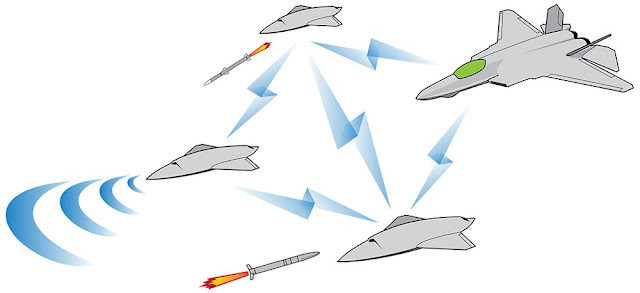Improved Artificial Intelligence will allow pilots to control drone wingmen
by noreply@blogger.com (brian wang) from NextBigFuture.com on (#29TXB)
F-35s, F-22s and other fighter jets will soon use improved "artificial intelligence" to control nearby drone "wingmen" able to carry weapons, test enemy air defenses or perform intelligence, reconnaissance and surveillance missions in high risk areas, senior Air Force officials said.
Air Force Chief Scientist Gregory Zacharias said that technology was progressing quickly at the Air Force Research Lab - to the point where much higher degrees of autonomy and manned-unmanned teaming is expected to emerge in the near future.
An F-35 computer system, Autonomic Logistics Information System, involves early applications of artificial intelligence wherein computers make assessments, go through checklists, organize information and make some decisions by themselves - without needing human intervention.



"The more autonomy and intelligence you can put on these vehicles, the more useful they will become," Zacharias said.
This development could greatly enhance mission scope, flexibility and effectiveness by enabling a fighter jet to conduct a mission with more weapons, sensors, targeting technology and cargo, Zacharias explained.
For instance, real-time video feeds from the electro-optical/infrared sensors on board an Air Force Predator, Reaper or Global Hawk drone could go directly into an F-35 cockpit, without needing to go to a ground control station. This could speed up targeting and tactical input from drones on reconnaisance missions in the vicinity of where a fighter pilot might want to attack. In fast-moving combat circumstances involving both air-to-air and air-to-ground threats, increased speed could make a large difference.
Drones could be programmed to fly into heavily defended or high-risk areas ahead of manned-fighter jets in order to assess enemy air defenses and reduce risk to pilots.
Read more










Air Force Chief Scientist Gregory Zacharias said that technology was progressing quickly at the Air Force Research Lab - to the point where much higher degrees of autonomy and manned-unmanned teaming is expected to emerge in the near future.
An F-35 computer system, Autonomic Logistics Information System, involves early applications of artificial intelligence wherein computers make assessments, go through checklists, organize information and make some decisions by themselves - without needing human intervention.



"The more autonomy and intelligence you can put on these vehicles, the more useful they will become," Zacharias said.
This development could greatly enhance mission scope, flexibility and effectiveness by enabling a fighter jet to conduct a mission with more weapons, sensors, targeting technology and cargo, Zacharias explained.
For instance, real-time video feeds from the electro-optical/infrared sensors on board an Air Force Predator, Reaper or Global Hawk drone could go directly into an F-35 cockpit, without needing to go to a ground control station. This could speed up targeting and tactical input from drones on reconnaisance missions in the vicinity of where a fighter pilot might want to attack. In fast-moving combat circumstances involving both air-to-air and air-to-ground threats, increased speed could make a large difference.
Drones could be programmed to fly into heavily defended or high-risk areas ahead of manned-fighter jets in order to assess enemy air defenses and reduce risk to pilots.
Read more